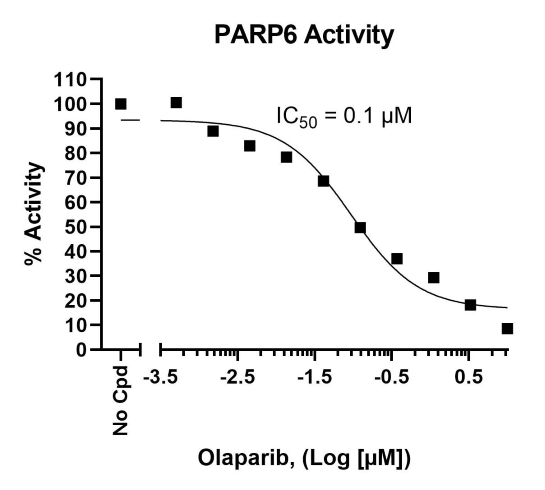PARP6, GST-Tag Recombinant
Recombinant human full length PARP6 (poly(ADP-ribose) polymerase 6), amino acids 1-630(end). In this construct the N-terminal end of PARP6 is fused with a GST-tag. The recombinant protein was affinity purified.
This product has been cited 2 times.
≥81%
40 mM Tris-HCl, pH 8.0, 110 mM NaCl, 2.2 mM KCl, 0.02% Tween-20, 3 mM DTT, and 20% Glycerol
PARP6, also known as poly-(ADP-ribose) polymerase 6 or NAD+ ADP-ribosyltransferase 6, is part of the PARP family. ADP ribosylation, which is the addition of an ADP-ribose to a protein, is a reversible post-translational modification of proteins mostly involved in the DNA Damage Response (DDR) pathway. Mono-ADP-ribosylation (termed MARylation) is the addition of a unit of ADP-ribose. PARP6 is involved in brain development, controlling dendrite morphogenesis, and it may be involved in disorders such as autism and Rett’s syndrome. In the absence of PARP6, DNA repair is less efficient, and cytotoxicity is potentiated when DNA damaging insults occur. PARP6 correlates with poor prognosis in breast, pancreatic and other cancer types. PARP6 can monoribosylate Chk1 (checkpoint kinase 1) and inactivate mitotic proteins, indicating a role of PARP6 in mitosis. It was also proposed that PARP6 can inhibit hepatocellular carcinoma by acting on the XRCC6 (X-ray repair cross complementing 6)/Wnt/β-catenin pathway. Use of AZ0108, a PARP inhibitor, resulted in MPS (multipolar spindle) and apoptosis in vitro and in vivo. A deeper understanding of PARP6 functions is required, and the development of molecules targeting PARP6 is a promising new cancer therapy tool.




